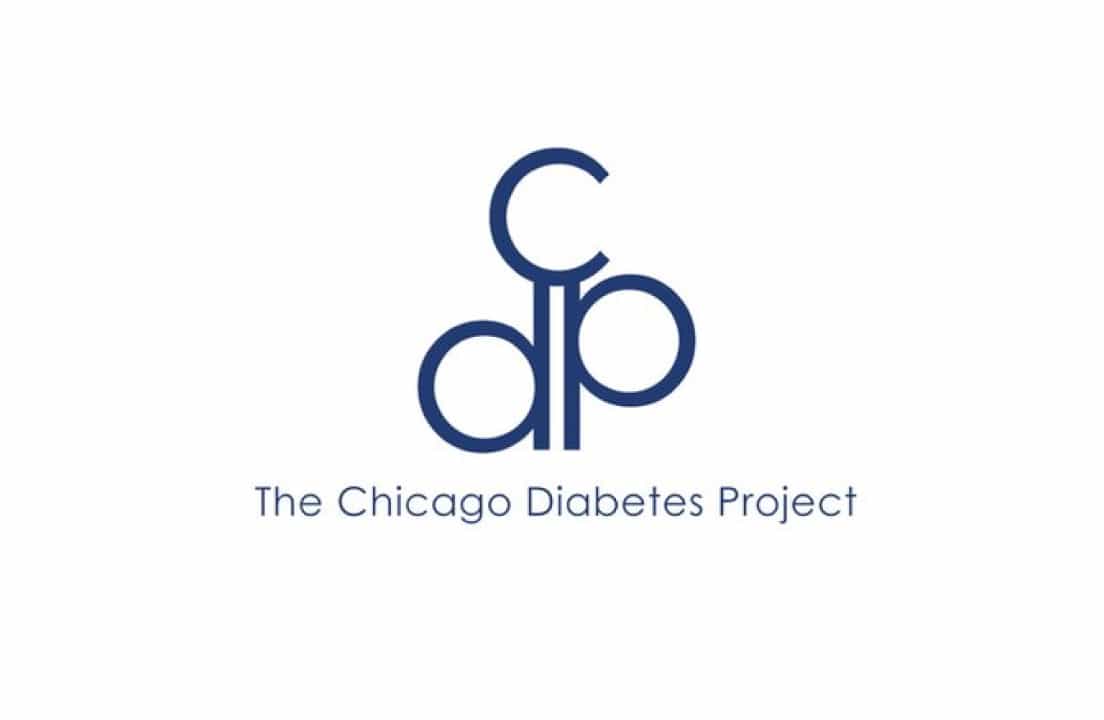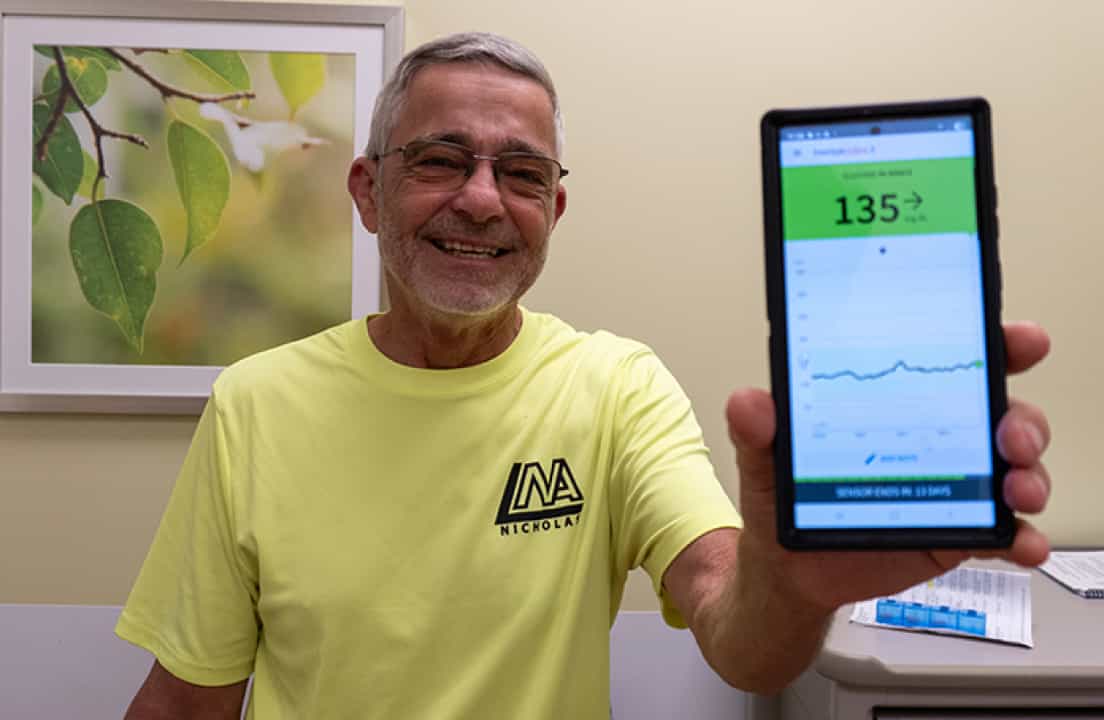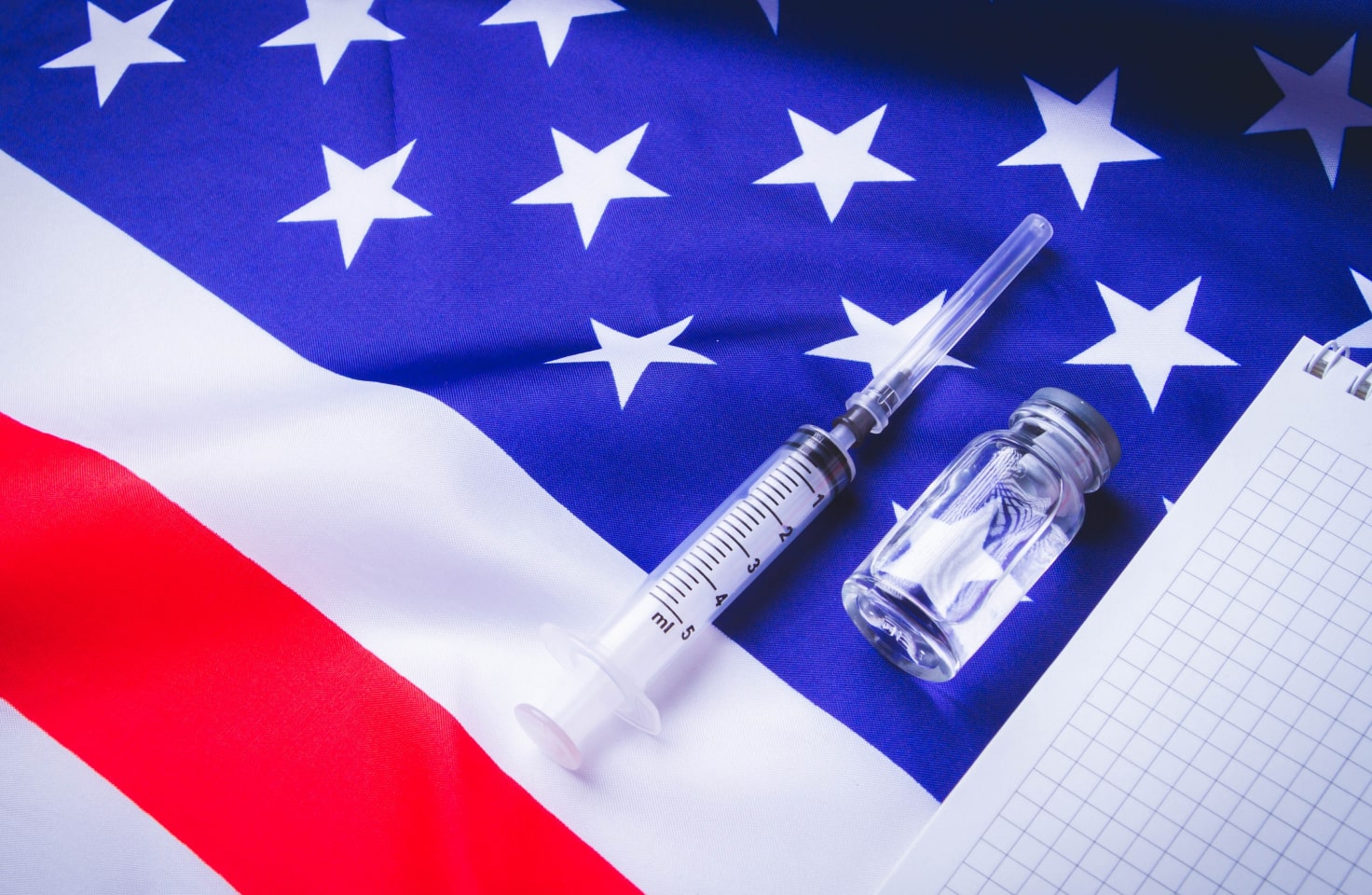T1D Guide
T1D Strong News
Personal Stories
Resources
T1D Misdiagnosis
T1D Early Detection
Research/Clinical Trials
Eversense 365—The New One-Year CGM
The Eversense® 365 System is a new, fully implantable continuous glucose monitor that provides up to 365 days of continuous glucose readings. The 365-day CGM system is the first and only year-long CGM option on the market.

A Leap in CGM Innovation
The scope of diabetes management for individuals with type 1 and type 2 diabetes just widened exponentially with a new fully implantable long-term continuous glucose monitor (CGM).
On September 17, 2024, Ascensia Diabetes Care and Senseonics announced that the U.S. Food and Drug Administration (FDA) allocated Eversense 365, a CGM that allows integration with certain medical devices and insulin pumps as part of an automated insulin delivery (AID) system.
365 Days
“Eversense 365 offers one year of accurate monitoring with fewer interruptions, enabling confident decisions, long-term peace of mind, and enhanced quality of life with just one CGM," said Brian Hansen, President of CGM at Ascensia Diabetes Care.
This revolutionary CGM sensor only needs to be changed once a year, whereas most CGM sensors wear out in 7 to 15 days.
How It Works
Eversense 365 CGM, cleared for individuals aged 18 years and older, requires a trained healthcare professional to place the prescription sensor under the skin of the upper arm.
Then, a removable smart transmitter is connected to the sensor, automatically sending glucose readings to a mobile app via Bluetooth every five minutes. The app displays glucose data and trends and alerts the user of high and low blood sugar. The system also includes on-body vibration alerts for high and low glucose levels.
Features of the Eversense 365 Include:
- The implantable sensor is placed under the skin by a medical professional and must also be removed by a health practitioner.
- A removable, rechargeable smart transmitter that is worn externally over the sensor. It sends readings to a mobile phone app.
- Silicone-based adhesives that are changed daily and cause little to no skin irritation.
- An iOS (Apple) or Android (Google) mobile app. The app displays glucose data and trends every five minutes and alerts users of high and low blood sugar levels.

The Eversense 365 CGM System has not been tested using insertion sites other than the upper arm. It is recommended that the sensor be inserted toward the back of the upper arm. Placement in this area minimizes the chance of the sensor and smart transmitter being bumped by doorways, walls or other narrow passages. It is recommended to avoid areas with loose skin, scars, tattoos, nerves, or blood vessels.
Eversense 365 Highlights
A Long Lasting and Durable CGM
Eversense 365 is the only CGM that lasts a year, while other CGM sensors last 7 to 14 days. While traditional sensors may fall off, the Eversense 365 transmitter can easily be removed and reattached because the sensor sits underneath the skin. It only takes one annual appointment to implant the sensor, which lasts several minutes, vs. the ongoing 7-14 days of repeated applications.
Fewer Interruptions
Most traditional short-term CGMs can trigger false alerts and not last as long as the intended two-week period; Eversense 365 reduces the risk of data interruptions, sensor failures and changes.
Fewer Wasted Sensors and Transmitters
The Eversense 365’s removable smart transmitter allows for fewer wasted sensors and has the environmental aspect of less all-around waste. If it gets knocked off, it can go right back on without wasting a sensor.
Fewer Skin Irritations
The gentle silicone-based adhesive transmitter offers less skin irritation and is changed daily, allowing users to clean their skin. The Eversense 365 transmitter is rechargeable and removable without dislodging the sensor. The transmitter stays in place using an adhesive. It has no cannula and rests comfortably on the skin.
Improved Glucose Control
Eversense has demonstrated dependable glucose values with tested accuracy for one year, with almost no false alerts from compression lows at night as you’re sleeping.

Brian Hansen, President of CGM, Ascensia, commented: “Speaking with people with diabetes, we found that some people were consistently struggling with false lows which interrupted their sleep. That is why it was extremely important to us to provide a CGM option with alerts that can be trusted, giving those in the diabetes community who had experienced challenges with their traditional, short-term CGM more choices.” The sensor provides improved glucose control while reducing diabetes distress.
On-body Alerts
Eversense 365 has been tested and has shown great accuracy which can lead to better blood glucose control.
Additionally, if you aren’t wearing the transmitter, you can't receive alerts. However, you still receive on-body vibration alerts for highs and lows when you are away from your phone and app without wasting a CGM. The on-body vibrations alert the user when the phone is out of sight. Your physician works with you to set these levels. Users get a nice, quiet buzz on their arm.

Integration
Eversense 365 has been cleared as an integrated CGM (iCGM) system, indicating that it can integrate with compatible medical devices as part of an automated insulin delivery (AID) system.
Eversense 365 is exceptionally well suited to address common limitations of AID systems, and the companies are advancing partnership discussions with various pump manufacturers.
At this point in time, Eversense 365 does not have pump integration, but we will keep everyone informed as we work towards this. However, Eversense 365 is compatible with an iOS (Apple) or Android (Google) mobile app and Apple watches.
Eversense 365 Disadvantages
Initial 24-Hour Calibration
Once your sensor has been inserted and linked to your smart transmitter, the system begins a 24-hour Warm-Up Phase. This does not need to be repeated until you get your next sensor in another year.

Weekly Calibrations
Eversense 365 still requires weekly fingerstick blood glucose (BG) calibrations after day 13, when symptoms do not match CGM information, and when taking certain medications. The weekly calibration takes just a few minutes.
Technical Non-Surgical Implantation and Removal
The Eversense 365 sensor requires a technical, non-surgical procedure with a local anesthetic to implant and remove the device. Patients must keep the wound dry and clean for five days, and if the site becomes infected, the sensor may need to be removed. Scar tissue formation is a potential risk, with approved sites limited to the upper arms.
Eversense 365 Cost
The Eversense 365 can be costly if you don’t have insurance. The exact cost of the Eversense 365 has yet to be disclosed. Still, users can gauge it against the 180-day sensor Eversense E3 cost, estimated to be around $2,700 annually for the sensor, $700 for the transmitter, and the non-surgical procedure may cost around $450 for insertions and $100 for removal.
However, most insurance companies cover the cost of the insertion and removal procedures and the device itself.
Insurance Options
Most commercial healthcare plans cover Eversense 365 if the user is insulin dependent. This list includes Aetna, Cigna, Humana, United Healthcare, and most Blue Cross Blue Shield plans. The 365 is also available to people on Medicare but not Medicaid or MediCal.
With some plans, if you have commercial insurance, you may be eligible to pay $199 for a full year.
Interesting Fact: Senseonics is now focusing on research to develop a fully implantable sensor that doesn’t require the transmitter to be placed on top of the skin. They are also working on creating a self-powering transmitter with Bluetooth inside the technology that shares updates directly with your phone or watch.
Availability
Eversense 365 is FDA-cleared as an integrated CGM system compatible with certain medical devices. The device company Ascensia Diabetes Care has partnered with Senseonics to distribute Eversense products. Eversense 365 has been launched in the US and is expected to launch in select European countries in mid-2025.
The Eversense Payment Assistance and Simple Savings (PASS) program allows qualified participants to receive the CGM sensor and transmitter for $199.

Eversense E3
In 2022, Senseonics’ Eversense E3 was considered groundbreaking in the diabetes tech world, as it only needed to be changed every 180 days. This CGM is still available in Europe and offers most of the same benefits as 365, apart from lasting six months instead of the entire year.
The difference between the Eversense E3 and the Eversense 365 is that the Eversense E3 requires daily BG fingerstick calibrations, and the Eversense 365 requires BG fingerstick calibrations weekly to calibrate after day 14. BG measurements are also necessary if the patient has symptoms that differ from readings or is taking certain medications.
In Conclusion
The Eversense 365 may be a good option for T1Ds and T2Ds who want a long-lasting CGM with less maintenance. This groundbreaking CGM is irrefutably creating more alternatives and helping individuals with diabetes alleviate some of the burdens faced through daily management.
This innovative diabetes technology allows T1Ds another option for a more simplified process—a CGM with proven results that only needs to be changed once a year. Call today to get pre-qualified.


.webp)





.webp)


.jpg)
.jpeg)
.jpg)




.jpg)



.jpg)

.jpg)



.jpg)

.jpg)
.jpg)



.jpg)

.jpg)




.jpg)

.jpg)
.jpg)
.jpg)
.jpg)
.jpg)
.jpg)

.jpg)
.jpg)
.jpg)

.jpg)



.jpg)
.jpg)
.jpg)
.jpg)


.jpg)
.jpg)


.jpg)
















.jpg)





.jpg)







.webp)



















.webp)